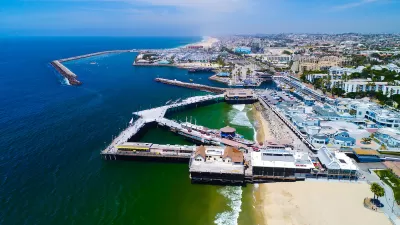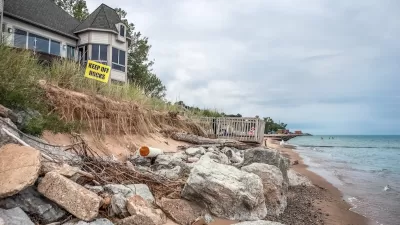L.A. County is getting a $1 million grant from the California Ocean Protection Council to develop a Regional Coastal Strategic Adaptation Plan to protect its beaches from climate change impacts while prioritizing equitable access and sustainability.

Los Angeles County has secured a $1 million grant from the California Ocean Protection Council (OPC) to bolster the resilience of its 45 miles of coastline against climate change-induced threats like erosion and sea level rise. The funding will support the County's Regional Coastal Strategic Adaptation Plan (RCSAP), a cornerstone of the Department of Beaches and Harbors’ Coastal Resilience Initiative. This plan, informed by community engagement and cutting-edge nature-based strategies, will focus on protecting beaches such as Zuma, Dockweiler, and Redondo from accelerating erosion while ensuring equitable access for underserved communities.
The initiative addresses the urgency of preserving public beach access and safeguarding coastal infrastructure from extreme weather patterns exacerbated by climate change. Leaders like Supervisor Lindsey P. Horvath and DBH Director Gary Jones emphasize the importance of equity and inclusivity in advancing sustainable solutions. The RCSAP builds on the foundational work of a 2023 Coastal Resilience Study and incorporates innovative techniques like sediment reuse and living shorelines to adapt to the impacts of climate change systematically.
The RCSAP will unfold over two years, engaging a diverse coalition of stakeholders, including tribal organizations, community advocates, and municipal partners, to design and implement tailored strategies. This effort aligns with California's broader sea level rise adaptation goals and exemplifies how targeted investments can protect vital ecosystems, ensure public access, and foster long-term sustainability.
FULL STORY: Los Angeles County Secures $1 Million Grant to Bolster Beach Resilience

Trump Administration Could Effectively End Housing Voucher Program
Federal officials are eyeing major cuts to the Section 8 program that helps millions of low-income households pay rent.

Planetizen Federal Action Tracker
A weekly monitor of how Trump’s orders and actions are impacting planners and planning in America.

Ken Jennings Launches Transit Web Series
The Jeopardy champ wants you to ride public transit.

Washington Legislature Passes Rent Increase Cap
A bill that caps rent increases at 7 percent plus inflation is headed to the governor’s desk.

From Planning to Action: How LA County Is Rethinking Climate Resilience
Chief Sustainability Officer Rita Kampalath outlines the County’s shift from planning to implementation in its climate resilience efforts, emphasizing cross-departmental coordination, updated recovery strategies, and the need for flexible funding.

New Mexico Aging Department Commits to Helping Seniors Age ‘In Place’ and ‘Autonomously’ in New Draft Plan
As New Mexico’s population of seniors continues to grow, the state’s aging department is proposing expanded initiatives to help seniors maintain their autonomy while also supporting family caregivers.
Urban Design for Planners 1: Software Tools
This six-course series explores essential urban design concepts using open source software and equips planners with the tools they need to participate fully in the urban design process.
Planning for Universal Design
Learn the tools for implementing Universal Design in planning regulations.
Heyer Gruel & Associates PA
Ada County Highway District
Institute for Housing and Urban Development Studies (IHS)
City of Grandview
Harvard GSD Executive Education
Toledo-Lucas County Plan Commissions
Salt Lake City
NYU Wagner Graduate School of Public Service





























